How to get rid of a lump. Skin Lumps Unveiled: Causes, Symptoms, and Effective Treatments
What are the common types of skin lumps. How can you identify dermatofibromas and keratoacanthomas. What treatment options are available for skin lumps. How can you prevent the development of skin growths.
Understanding Dermatofibromas: Benign Skin Growths
Dermatofibromas are small, rounded, noncancerous growths that develop on the skin. These benign tumors form when certain cells in the dermis, the second layer of skin, undergo excessive growth. While their exact cause remains unknown, dermatofibromas often appear after minor skin injuries such as splinter punctures or insect bites.
Characteristics of Dermatofibromas
- Size: Typically 7-10 millimeters in diameter
- Color: Range from pink to reddish to brown
- Texture: Firm to the touch
- Location: Can occur anywhere but more common on exposed areas like legs and arms
Are dermatofibromas harmful? Generally, these growths are harmless and rarely cause additional symptoms beyond their appearance. Some individuals may experience mild sensitivity when touching the affected area.

Risk Factors for Dermatofibroma Development
Several factors may increase the likelihood of developing dermatofibromas:
- Age: More common in adults aged 20-49
- Gender: Women are more susceptible than men
- Immune system: Individuals with suppressed immune systems may be at higher risk
- Skin trauma: Minor injuries can trigger their formation
Diagnosing and Treating Dermatofibromas
How are dermatofibromas diagnosed? A trained dermatologist can usually identify these growths through visual examination, often employing dermatoscopy. In some cases, a skin biopsy may be performed to rule out other conditions, including skin cancer.
What treatment options are available for dermatofibromas? Since these growths are benign, treatment is typically pursued for cosmetic reasons. Common approaches include:
- Freezing with liquid nitrogen
- Localized corticosteroid injections
- Laser therapy
- Shaving the top to flatten the growth
Can dermatofibromas be completely removed? While wide surgical excision can fully remove a dermatofibroma, this method may result in scarring that could be more noticeable than the original growth. It’s important to note that even after treatment, dermatofibromas may recur.

Keratoacanthoma: A Low-Grade Skin Tumor
Keratoacanthoma (KA) is a slow-growing skin tumor that resembles a tiny dome or crater. Despite its similarities to squamous cell carcinoma (SCC), KA is considered benign and rarely spreads to other cells.
Key Features of Keratoacanthoma
- Origin: Hair follicles
- Appearance: Dome-shaped with a keratin plug, often compared to a small volcano
- Size: Typically 1-2 centimeters
- Location: Commonly found on sun-exposed areas like face, neck, hands, arms, and legs
How does keratoacanthoma develop? The exact cause is unknown, but several factors may contribute to its formation:
- Sun exposure
- Contact with chemical carcinogens
- Smoking
- Infection with certain strains of human papillomavirus
- Trauma
- Genetic factors
The Lifecycle of Keratoacanthoma: From Growth to Healing
What is the typical progression of keratoacanthoma? The growth cycle of KA usually spans two to three months and follows a distinct pattern:
- Initial appearance as a small, round bump
- Rapid growth into a lesion or wound
- Formation of a dome with a brown keratin plug
- Potential crater-like appearance if the keratin plug falls out
- Eventual flattening and healing, often leaving a scar
Why is it important to differentiate keratoacanthoma from squamous cell carcinoma? While KA is benign and may heal on its own, SCC can spread to lymph nodes if left untreated. Due to their similar appearance, many doctors recommend surgical removal of KA to ensure proper diagnosis and treatment.

Treatment Approaches for Keratoacanthoma
What are the primary treatment options for keratoacanthoma? While KA may eventually heal on its own, medical intervention is often recommended due to its similarity to SCC. Common treatments include:
- Surgical excision
- Radiotherapy
- Injections (e.g., intralesional methotrexate or 5-fluorouracil)
Is the outlook for keratoacanthoma generally positive? Yes, as KA is a benign tumor, the prognosis is typically good. However, proper medical evaluation and treatment are crucial to ensure the growth is not a more serious form of skin cancer.
Preventing Skin Lumps and Protecting Your Skin
While it may not be possible to completely prevent the development of dermatofibromas or keratoacanthomas, there are steps you can take to reduce your risk and protect your skin:
- Limit sun exposure, especially during peak hours
- Use broad-spectrum sunscreen with a high SPF
- Wear protective clothing when outdoors
- Avoid smoking and exposure to chemical carcinogens
- Protect your skin from minor injuries when possible
- Maintain a healthy immune system through proper nutrition and lifestyle habits
How often should you examine your skin for unusual growths? It’s recommended to perform regular self-examinations and consult a dermatologist if you notice any new or changing skin lesions.

When to Seek Medical Attention for Skin Lumps
While many skin lumps are benign, it’s important to know when to consult a healthcare professional. Consider seeking medical attention if you observe:
- Rapid growth or changes in size, shape, or color of a skin lump
- Persistent itching, bleeding, or pain associated with a growth
- Any new skin lesion that doesn’t heal within a few weeks
- Multiple growths appearing in a short period
- Family history of skin cancer or a personal history of unusual skin growths
Can regular check-ups help in early detection of problematic skin lumps? Absolutely. Regular dermatological check-ups can aid in the early detection and treatment of both benign and potentially malignant skin growths.
Advances in Skin Lump Diagnosis and Treatment
The field of dermatology continues to evolve, bringing new advancements in the diagnosis and treatment of skin lumps. Some recent developments include:
Improved Diagnostic Techniques
- High-resolution dermoscopy for detailed skin examination
- Confocal microscopy for non-invasive imaging of skin at cellular level
- Artificial intelligence-assisted image analysis for more accurate diagnoses
Innovative Treatment Options
What new treatments are emerging for skin lumps? Recent advancements include:

- Photodynamic therapy for certain types of skin growths
- Targeted immunotherapy for specific skin cancers
- Minimally invasive surgical techniques for reduced scarring
- Topical treatments with improved efficacy for benign growths
How might these advancements impact patient care? These developments can lead to earlier detection, more precise diagnoses, and less invasive treatment options, ultimately improving patient outcomes and quality of life.
Living with Skin Lumps: Psychological and Social Aspects
While many skin lumps are medically benign, they can still have significant psychological and social impacts on individuals. It’s important to address these aspects of living with visible skin growths:
Emotional Challenges
- Self-consciousness about appearance
- Anxiety about potential health implications
- Frustration with recurring growths
Social Considerations
How can visible skin lumps affect social interactions? Some individuals may experience:
- Reluctance to engage in social activities
- Avoidance of certain clothing styles to hide growths
- Concerns about others’ perceptions or reactions
What strategies can help in coping with these challenges? Consider the following approaches:
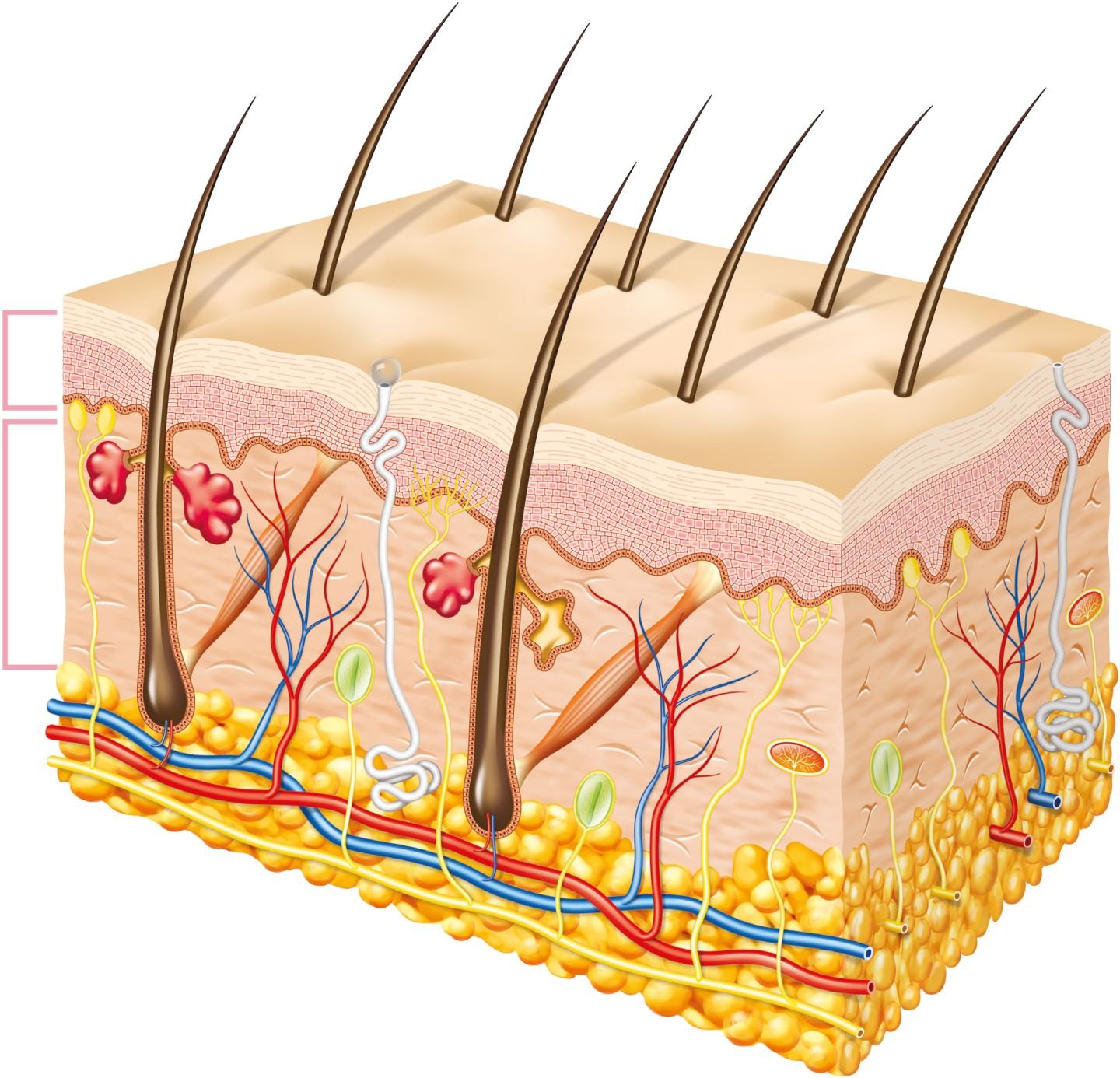
- Educating yourself and others about the benign nature of many skin lumps
- Seeking support from friends, family, or support groups
- Exploring cosmetic options to minimize the appearance of growths
- Focusing on overall skin health and self-care
- Consulting with a mental health professional if emotional distress persists
Remember, many people live with skin lumps, and they do not define your worth or health status. Maintaining a positive self-image and open communication with healthcare providers can greatly improve your quality of life while managing skin growths.
Skin Health Beyond Lumps: Holistic Approaches
While addressing specific skin lumps is important, maintaining overall skin health can help prevent various dermatological issues and promote a vibrant, healthy appearance. Consider incorporating these holistic approaches into your skincare routine:
Nutrition for Skin Health
Can diet influence skin health and potentially reduce the risk of skin growths? Indeed, certain nutrients play crucial roles in maintaining healthy skin:

- Antioxidants (found in berries, leafy greens, and nuts) to combat free radicals
- Omega-3 fatty acids (in fish, flaxseeds, and walnuts) for skin hydration
- Vitamin C (in citrus fruits and bell peppers) for collagen production
- Vitamin E (in avocados and sunflower seeds) for skin protection
- Zinc (in lean meats and pumpkin seeds) for skin repair and renewal
Stress Management and Skin Health
How does stress affect skin health? Chronic stress can negatively impact skin by:
- Triggering inflammatory responses
- Disrupting hormonal balance
- Compromising the skin’s barrier function
- Potentially exacerbating existing skin conditions
What stress-reduction techniques can benefit skin health? Consider incorporating:
- Regular exercise
- Meditation or mindfulness practices
- Adequate sleep
- Hobbies and relaxation activities
- Professional counseling if needed
Environmental Factors and Skin Protection
Beyond sun protection, what other environmental factors should be considered for skin health? Pay attention to:

- Air pollution: Use antioxidant-rich skincare products and cleanse skin thoroughly
- Humidity levels: Adjust your skincare routine based on climate conditions
- Water quality: Consider using a filter to remove potential irritants from shower water
- Exposure to irritants: Be mindful of household and workplace chemicals that may affect skin
By adopting a holistic approach to skin health, you not only address specific concerns like skin lumps but also promote overall skin vitality and resilience. Remember, healthy skin is a reflection of overall well-being, encompassing nutrition, stress management, and environmental awareness.
Dermatofibromas: Definition and Patient Education
What are dermatofibromas?
Dermatofibromas are small, rounded noncancerous growths on the skin. The skin has different layers, including the subcutaneous fat cells, dermis, and epidermis. When certain cells inside the second layer of skin (the dermis) overgrow, dermatofibromas can develop.
Dermatofibromas are benign (noncancerous) and harmless in this regard. It’s considered to be a common tumor in the skin that may occur in multiples for some people.
Dermatofibromas are caused by an overgrowth of a mixture of different cell types in the dermis layer of the skin. The reasons why this overgrowth occurs aren’t known.
The growths often develop after some type of small trauma to the skin, including a puncture from a splinter or bug bite.
In addition to minor skin injuries being a risk for dermatofibroma formation, age is a risk factor. Dermatofibromas occur more commonly in adults who are 20 to 49 years of age.
These benign tumors also tend to be more common in women than men.
Those with a suppressed immune system may be at a higher risk for dermatofibromas to form.
Apart from the bumps on the skin, dermatofibromas rarely cause additional symptoms. The growths can range in color from pink to reddish to brown.
They are usually between 7 and 10 millimeters in diameter, although they can be smaller or larger than this range.
Dermatofibromas are also usually firm to the touch. They can also be mildly sensitive to the touch, although most don’t cause symptoms.
The growths can occur anywhere on the body but appear more often on exposed areas, such as the legs and arms.
A diagnosis is usually made during a physical exam. A trained dermatologist can usually identify a growth through a visual examination, which may include dermatoscopy.
Additional testing can include a skin biopsy to rule out other conditions, such as skin cancer.
Typically, dermatofibromas are chronic and don’t spontaneously resolve on their own. Because they are harmless, treatment is usually solely for cosmetic reasons.
Because they are harmless, treatment is usually solely for cosmetic reasons.
Treatment options for dermatofibromas include:
- freezing (with liquid nitrogen)
- localized corticosteroid injection
- laser therapy
- shaving the top to flatten the growth
These therapies may not be completely successful at removing a dermatofibroma because the tissue may reaccumulate within the lesion until it returns to its size before therapy.
A dermatofibroma can be completely removed with a wide surgical excision, but there is also a high likelihood of scar formation that may be considered more unsightly than the dermatofibroma itself.
Never attempt removal of a growth at home. This can lead to infection, scarring, and excess bleeding.
Since the growths are almost always harmless, dermatofibromas don’t negatively affect a person’s health. Removal methods, such as freezing and excision, have varying degrees of success. In many cases, these growths can grow back.
Researchers don’t currently know exactly why the dermatofibromas occur in some people.
Because the cause is unknown, there is no sure way to prevent dermatofibromas from developing.
Keratoacanthoma: Definition and Patient Education
What is keratoacanthoma?
Keratoacanthoma (KA) is a low-grade, or slow-growing, skin cancer tumor that looks like a tiny dome or crater. KA is benign despite its similarities to squamous cell carcinoma (SCC), or the abnormal growth of cancerous cells on the skin’s most outer layer. KA originates in the skin’s hair follicles and rarely spreads to other cells.
KA is commonly found on sun-exposed skin, such as skin on the:
- face
- neck
- hands
- arms
- legs
Treatments typically involve surgery, radiotherapy, or injections. Many doctors will recommend surgery to remove KA because it looks similar to the cancerous SCC. While untreated KA will eventually heal on its own, untreated SCC can spread to your lymph nodes.
Overall, the outlook for KA is good, as it’s a benign tumor. Read on to learn about the causes, risks, and how to protect yourself from getting KA.
The symptoms of KA are visual and lasts two to three months. The look is often compared to a small volcano.
First, KA shows up as small, round bump. Then, it grows into a lesion or wound and reaches a size of between 1 and 2 centimeters within a few weeks. The wound looks like a dome with a plug made of brown keratin, which is the same material as hair and skin.
If the brown keratin comes out, the KA will look like a crater. When it heals, it’ll flatten and leave a scar.
The exact cause of KA is unknown. Some factors that may contribute to getting KA are:
- sun exposure
- contact with chemical carcinogens, or cancer-causing chemicals
- smoking
- infection with some strains of a wart virus, such as human papillomavirus
- trauma
- genetic factors
KA and SCC consist of very similar epidemiological features. This means they develop at similar rates and have common causes. This suggests exposure to sunlight causes KA, and one of the main causes of SCC is ultraviolet (UV) exposure.
This means they develop at similar rates and have common causes. This suggests exposure to sunlight causes KA, and one of the main causes of SCC is ultraviolet (UV) exposure.
Developing KA before the age of 20 is rare. People who have a higher risk of developing KA are people who:
- have prolonged sun exposure
- have naturally fair skin
- have compromised immune systems
- frequently use a tanning bed
- are over the age of 60
Men are also at a higher risk than women.
Genetics may play a factor too. People with immediate family members who’ve had some form of skin cancer are at a higher risk for developing multiple KA. One study also reported spontaneous growth of KA two to three months after skin cancer surgery.
Multiple KAs may show up as tumors that are 5 to 15 centimeters. It’s a non-melanoma skin cancer that rarely metastasizes, meaning it won’t spread to other areas of the body. But it can still be dangerous and should be treated by a doctor.
Many people with one KA lesion may develop more throughout their lifetime. But several rare conditions can cause multiple KAs to appear at once.
These conditions include:
It’s possible for your doctor to diagnose KA by looking at it, but because of its strong resemblance to SCC, an invasive type of skin cancer, your doctor may prefer to do a biopsy.
This means your doctor will want to cut out the KA for examination. This process involves numbing the KA with a local anesthetic before removing enough of the lesion to test with a scalpel or razor. The sample is then evaluated to form a diagnosis.
KA will go away on its own, but this can take many months. Your doctor may recommend surgery or medication to remove KA.
Removal treatments
Treatment options depend on the location of the lesion, the patient’s health history, and the size of the lesion. The most common treatment is a minor surgery, under a local anesthetic, to remove the tumor. This may require stitches, depending on the size of the KA.
Other treatments include:
- If you have cryosurgery, your doctor will freeze the lesion with liquid nitrogen to destroy it.
- If you have electrodesiccation and curettage, your doctor will scrap or burn off the growth.
- If you have Mohs’ microscopic surgery, your doctor will continue to take tiny pieces of skin until the lesion is completely removed. This treatment is most often used on the ears, nose, hands, and lips.
- Doctors use radiation treatment and X-ray therapy for people who are unable to have a surgical procedure for other health reasons.
Medications
Medications are used if you aren’t considered a good candidate for surgery. Doctors can prescribe drugs for people who have numerous lesions.
The medical treatments include:
- intralesional methotrexate
- injecting a folic acid that halts DNA synthesis and kills cancer cells
- intralesional 5-fluorouracil, which is an injection that blocks cancer cells from reproducing
- topical 5-fluorouracil
- bleomycin, which is an anti-tumor agent that blocks cell cycles
- a 25 percent solution of podophyllin
- oral acitretin, or chemical vitamin A
- oral isotretinoin (Accutane)
- steroids
These medications can reduce the size and the number of lesions, making the removal treatments or surgeries easier and less invasive.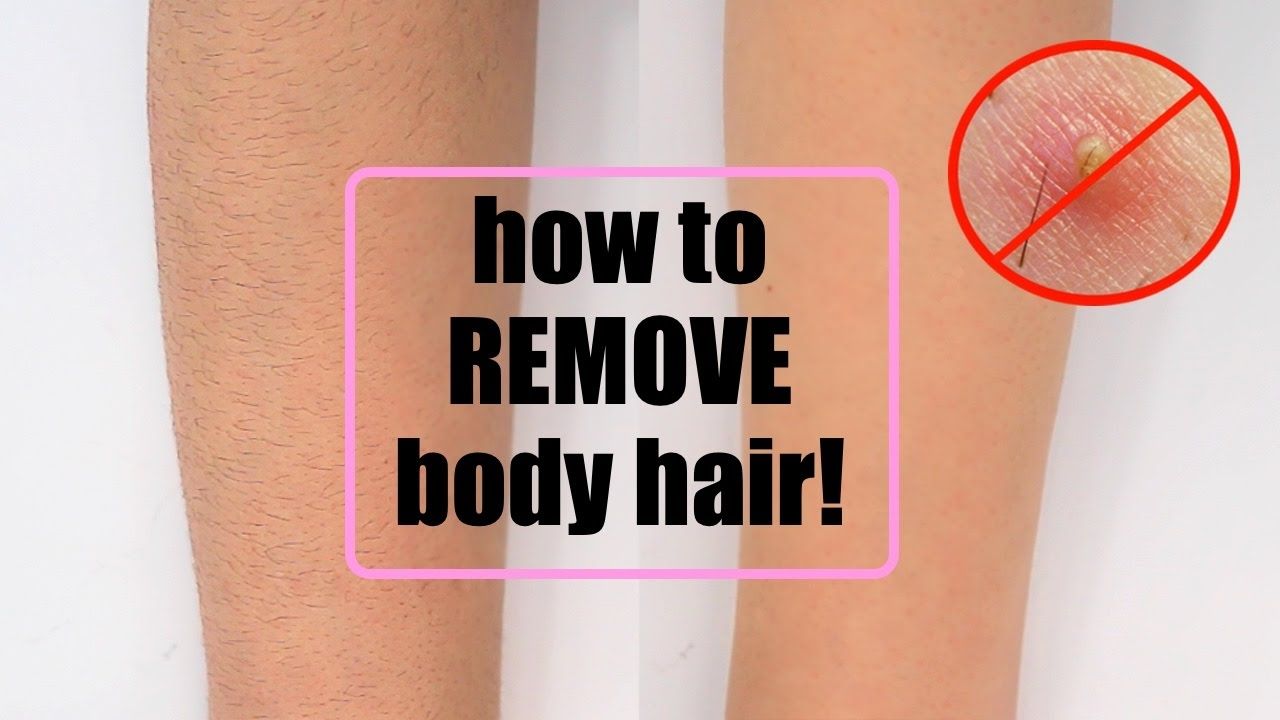 They aren’t a substitute for actual surgery or other removal treatments. Ask your doctor about any side effects these medications may cause.
They aren’t a substitute for actual surgery or other removal treatments. Ask your doctor about any side effects these medications may cause.
Home care
Home care involves treating the site of the tumor after it’s removed to help the skin in the area heal. Your doctor will provide you with specific instructions, including to keep the area dry and covered while it heals.
The treatment doesn’t stop completely after the lesion is removed. Once you’ve had KA, it’s common for it to reoccur, so you’ll want to regularly go to follow-up appointments with your dermatologist or primary care physician. Maintaining healthy habits to protect your skin from the sun can help prevent reoccurring lesions.
KA is curable and isn’t life-threatening. The majority of KA lesions will only cause cosmetic scars at their worst.
However, some may spread to lymph nodes if left untreated. If it spreads, the risks increase significantly with less than a 20 percent 10-year survival rate. If cancer spreads from one location to another, then there’s less than a 10 percent chance for a 10-year survival rate.
If cancer spreads from one location to another, then there’s less than a 10 percent chance for a 10-year survival rate.
People who develop KA are at a higher risk for future episodes. If you’ve had a KA tumor or lesion, schedule regular visits with your doctor so you can quickly identify and treat KA growths at an early stage. The doctor you see can be a dermatologist or a doctor with experience examining the skin for skin cancer and lesions.
If you’re concerned about a lesion or unusual mole, make an appointment with your doctor. Similarly, if a spot suddenly changes form, color, or shape, or starts to itch or bleed, ask your doctor to check it.
You can take steps to prevent KA by protecting your skin from the sun. Staying out of the sun in the middle of the day can help reduce direct sun exposure. You’ll also want to avoid any artificial UV lights, such as those that come from tanning beds.
Wear clothing that covers large portions of your skin and sunscreen with at least an SPF of 30. You’ll want to make sure that your sunscreen blocks both UVA and UVB light.
You’ll want to make sure that your sunscreen blocks both UVA and UVB light.
You can also regularly examine your skin for new or growing moles or colored patches. If you’re concerned about KA, make regular appointments with your doctor or dermatologist so that they can detect and promptly remove any KA tumors.
Treatment of a lump in the throat – causes and symptoms
Article rating
4.50 (Voted: 6)
Contents
- Causes of feeling a lump in the throat
- Formations of the larynx and laryngopharynx
- How to get rid of a lump in the throat?
Many people at least once in their lives felt lump in throat . If this occurs once, there is no cause for concern. However, if this symptom is constantly present in a person, then this brings very terrible discomfort.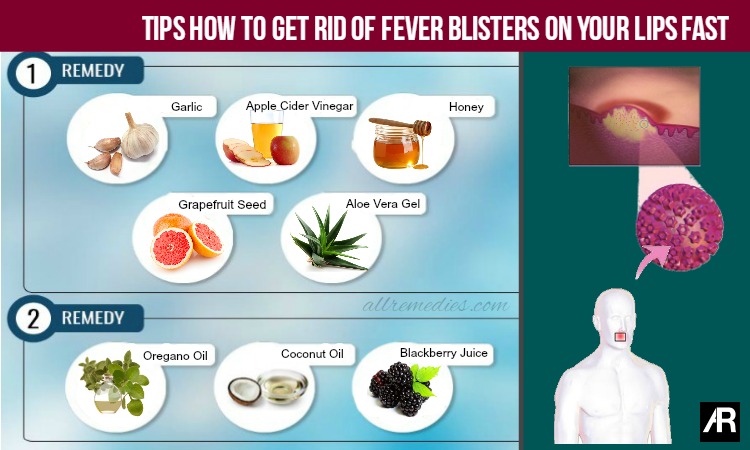 This is accompanied by feelings of anxiety and fear of choking.
This is accompanied by feelings of anxiety and fear of choking.
This complaint is very common, while in the work of otorhinolaryngologists, not always properly, pay attention to this pathology.
Causes of feeling a lump in the throat
It must be understood that a lump in the throat is the cause of many diseases.
The larynx is considered a hormone-dependent organ. The feeling of a lump in the throat happens not only with diseases of the ENT organs.
Also common cause is:
- Pathology of the thyroid gland
- Pathology of the gastrointestinal tract (GERD)
- Pathology of the esophagus
- And the spine.
Among the ENT organs there are often such diseases as:
- Chronic pharyngitis
- Chronic tonsillitis
- Postnasal drip syndrome (feeling of mucus running down the back of the throat)
Laryngeal and hypopharyngeal masses
Also less common:
- Thyrohyoid syndrome (Eagle syndrome) 9 0010
- Iron deficiency anemia
- Salivary gland hypofunction
- Disorder functions of the temporomandibular joint
- Atypical manifestation of an allergic reaction
Perhaps this phenomenon is associated with stress, and can be characterized as a manifestation of a depressive disorder, however, the significance of psychological factors in the development of a coma in the throat has not been fully determined.
How to get rid of a lump in the throat?
Since this is a symptom of many diseases, the cause must first be determined. To do this, you need to contact an otolaryngologist. He can immediately make a diagnosis, or exclude the pathology of the ENT organs, and then refer him for a search to other specialists.
In any case, the treatment is selected individually. This problem requires an integrated approach.
In the “ENT clinic plus 1” specialists will be able to conduct a complete examination of ENT organs, using video endoscopic equipment, thanks to which good visualization of even hard-to-reach places is possible. And also to establish the correct diagnosis, and prescribe the appropriate treatment. Or a possible referral to other specialists.
Our specialists
All specialists get rid of a lump in the throat: best methods and tips
- 1.
 1 Causes occurrence of a lump in the throat
1 Causes occurrence of a lump in the throat - 1.2 Symptoms of a lump in the throat
- 1.3 Diagnosis of a lump in the throat
- 1.3.1 Main signs of a lump in the throat
- 1.3.2 Diagnostic methods
- 1.4 Treatment of a lump in the throat at home
- 1.4.1 Various ways to improve well-being
- 1.5 Prevention of a lump in the throat
- 1.5. 1 Nutrition and hydration
- 1.5.2 Indoor air
E breathing exercises for a coma in the throat
- 1.7 The use of folk remedies for a coma in the throat
- 1.7.1 Kefir with honey
- 1.7.2 Propolis milk
- 1.7.3 Chamomile and lemon balm tea
- 1.8.1 Understanding the psychosomatic causes of a lump in the throat
- 1.8.2 How to deal with the psychosomatic causes of a lump in the throat
- 1.9 Proper nutrition to treat a lump in the throat throat
- 1.
 10.1 Composition and active ingredients
10.1 Composition and active ingredients - 1.10.2 Presentation
- 1.10.3 Manufacturer
- 1.10.4 Doctor’s recommendations
- 1.10.5 Side effects
9 0010
- 1.
- 1.11 When to see a doctor if you have Lump in throat
- 1.12 Related video:
- 1.13 Q&A:
- 1.13.0.1 What causes can cause a lump in the throat?
- 1.13.0.2 What methods help to get rid of a lump in the throat?
- 1.13.0.3 Which doctor treats the feeling of a lump in the throat?
- 1.13.0.4 What medicines help get rid of a lump in the throat?
- 1.13.0.5 Can the sensation of a lump in the throat be a sign of a dangerous disease?
- 1.13.0.6 Is it possible to prevent the sensation of a lump in the throat?
9000 9 1.8 Psychosomatic causes of coma in the throat and how to eliminate them
Find out how to get rid of the unpleasant feeling of a lump in your throat! Tips and tricks for quick and effective relief from an unpleasant symptom. Proven methods for the safe and effective treatment of a lump in the throat.
A lump in the throat is an unpleasant condition that often worries people of all ages. The feeling that a lump gets stuck in the throat can appear at the most unexpected moment – during a conversation, eating, drinking, psychological stress, and sometimes for no apparent reason. This unpleasant sensation can lead to a decrease in the quality of life, which encourages people to look for ways to help cope with this ailment.
There are many physiological causes that can provoke the appearance of a coma in the throat – it can be irritation of the mucous membrane of the pharynx, damage to the larynx, disruption of the thyroid gland, diseases of the gastrointestinal tract, allergies, infectious and inflammatory diseases of the respiratory system, etc.
As soon as you feel a lump in your throat, it is important to determine the cause of it, which only a doctor can determine. He will also prescribe the optimal treatment, which can be both medication and alternative, depending on the cause and degree of development of the disease. Also, to overcome a lump in the throat, you can try special exercises, relaxing massages, inhalations, diet and a healthy lifestyle that will help relieve symptoms and improve health.
Also, to overcome a lump in the throat, you can try special exercises, relaxing massages, inhalations, diet and a healthy lifestyle that will help relieve symptoms and improve health.
In this article, we looked at some of the ways to deal with a lump in the throat. It is important to remember that each organism is individual, and what helps one person may be useless for another. Therefore, when a lump appears in the throat, it is necessary to consult a doctor and undergo a comprehensive examination, which will help to establish the cause of the ailment and find the best way to deal with it.
Causes of a lump in the throat
A lump in the throat can appear for various reasons, but in most cases it is due to stress, nervousness or emotional overstrain, which affect the functioning of the larynx and laryngeal muscles.
The lump can also be caused by prolonged exposure to polluted atmospheres, smoking or alcohol abuse, which can lead to throat irritation.
One of the causes may be an allergic reaction that occurs upon contact with allergens such as dust, pollen or animals, which leads to swelling of the mucous membrane of the throat and a feeling of discomfort.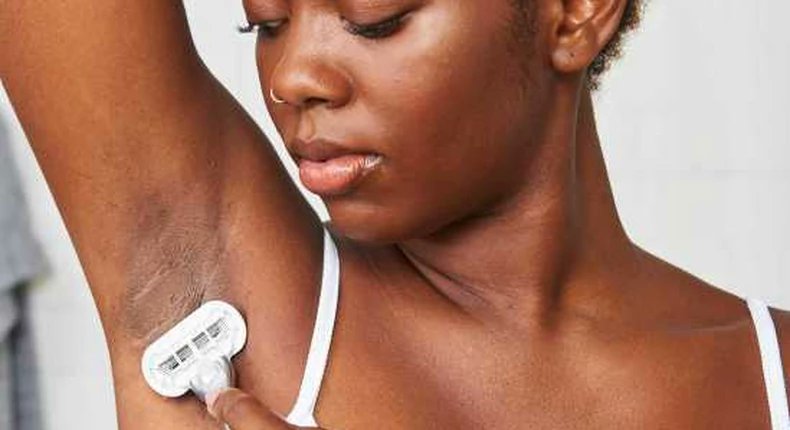
Diseases related to the respiratory system, such as bronchitis, pneumonia or asthma, can also cause a lump in the throat. In this case, who can join the cough and shortness of breath.
Rarely, a lump in the throat may be a sign of a more serious condition, such as swelling of the throat, intestines, or thyroid gland.
In any case, if you have a lump in your throat and this symptom does not disappear within a few days or is accompanied by other symptoms, you should consult a doctor for a consultation and find out the causes of the discomfort.
Symptoms of a lump in the throat
Feeling of a lump in the throat is a fairly common problem that can affect anyone at any age. The coma may come on suddenly and disappear on its own, but there may be times when medical attention is needed, especially if the sensation is strong and prolonged.
Symptoms associated with a lump in the throat may include:
- Feeling of a lump in the throat, difficulty swallowing, or a feeling that something is stuck in the throat
- Feeling of dryness and irritation in the throat
- Pain in the throat or in the thyroid gland
- Hypersensitivity of the neck and throat
- 900 17 Breathing and voice problems
If you experience these symptoms, a medical professional should be contacted, especially if they do not disappear within a few days. You may need to undergo a specialized examination to diagnose the cause of your condition and determine the best course of treatment.
You may need to undergo a specialized examination to diagnose the cause of your condition and determine the best course of treatment.
Diagnosis of a lump in the throat
The main signs of a lump in the throat
A lump in the throat is an unpleasant sensation that is often accompanied by pain. It appears in various diseases, such as influenza, pharyngitis, tonsillitis, tonsillitis, bronchitis, pneumonia and others. The main signs of a lump in the throat are:
- feeling of a foreign body in the throat;
- sore and irritated throat;
- difficulty in swallowing;
- dryness and itching in the throat;
- increased body temperature.
Diagnostic methods
For the correct diagnosis of a lump in the throat, it is necessary to consult an otolaryngologist. The doctor will examine the pharynx, take a swab, prescribe a general blood and urine test. The following tests may also be required:
- bacteriological analysis of sputum;
- pharyngoscopy;
- ultrasound examination of the thyroid gland;
- lung radiography;
- computed tomography.

After receiving the results of all examinations, the doctor usually determines the diagnosis and prescribes effective treatment in order to save the patient from discomfort and improve his health.
Treatment of a lump in the throat at home
Various ways to improve well-being
A lump in the throat can occur at any time and cause a lot of discomfort. Usually such an uncomfortable sensation can occur for nervous reasons, and sometimes indicates diseases. However, there are several ways that help improve the well-being of a lump in the throat at home.
- Drink plenty of fluids to keep the lining of your throat moist.
- Warm drinks such as tea, turmeric or ginger with honey and lemon are good.
- Do a series of stretches and neck exercises. It will help relax the muscles and reduce discomfort.
- Take a sip of anti-inflammatory tablets. For example, such as aspirin, ibuprofen or paracetamol. They will help reduce inflammation and relieve discomfort in the throat.

If you experience persistent lumps in your throat and symptoms persist, you should see a doctor. The doctor will be able to identify the cause that causes these symptoms and suggest effective treatment.
Prevention of a lump in the throat
Nutrition and hydration
The main cause of a lump in the throat is dry mucous membranes. Therefore, to prevent coma, it is necessary to consume sufficient fluids (at least 1.5 liters per day) and moisture-containing foods, such as fresh fruits and vegetables.
Indoor air
Some people are sensitive to dry air, especially during warmer months in an air-conditioned room or in winter when the heating system is on. To avoid a lump in the throat, you need to monitor the humidity in the room and use humidifiers or free humidification methods such as water sprays.
Quitting bad habits
Smoking, alcohol and other bad habits can cause a lump in the throat. For prevention, it is recommended to abandon such habits.
Sports and exercise
Sports and exercise improve blood circulation and help expand the bronchi and airways, which helps prevent a lump in the throat.
The right choice of clothing
Clothing should be comfortable and not restrict the throat to avoid the formation of a lump in the throat. This is especially important during exposure to low temperatures or wind.
Regular check-ups with an ENT doctor
Regular check-ups with an ENT doctor will help to detect health problems in a timely manner and prevent their complications, including the possible appearance of a lump in the throat.
Breathing exercises for a coma in the throat
One of the most effective ways to get rid of a coma in the throat is breathing exercises. It allows you to reduce tension in the muscles of the throat and improve blood circulation in the area, and also helps to relax and relieve stress.
Another exercise that can be done while sitting or standing is to relax the throat muscles. To do this, you need to slowly and deeply inhale, hold your breath for a few seconds and, as you exhale, loosen and relax the muscles of the throat. You can perform this exercise 5 to 10 times.
To do this, you need to slowly and deeply inhale, hold your breath for a few seconds and, as you exhale, loosen and relax the muscles of the throat. You can perform this exercise 5 to 10 times.
In addition, breathing exercises can be combined with meditation. Meditation will help calm the mind and relieve internal tension, which will also have a positive effect on the condition of the throat and help get rid of the coma.
However, if the lump in the throat does not disappear, it is necessary to consult a doctor. This can often be a sign of a serious condition in the throat, neck, or esophagus. Do not ignore this symptom and put off going to the doctor for a long time.
The use of folk remedies for a coma in the throat
A lump in the throat can appear for various reasons: from a cold to stress. Various folk remedies can help to cope with this feeling and reduce discomfort in the throat.
Kefir with honey
One of the most well-known ways to reduce a lump in the throat is the use of kefir with honey. To prepare this folk remedy, you need to mix 250 milliliters of kefir and 1 tablespoon of honey. Drink the resulting mixture in small sips.
To prepare this folk remedy, you need to mix 250 milliliters of kefir and 1 tablespoon of honey. Drink the resulting mixture in small sips.
Propolis milk
Propolis is a product obtained from bee hives. It is one of the most effective folk remedies for the treatment of throat. To prepare propolis milk, you need to heat a glass of milk and add 10 drops of propolis tincture. The drink should be drunk at night before going to bed.
Chamomile and lemon balm tea
Chamomile and lemon balm tea can also help relieve a lump in the throat. These plants have anti-inflammatory effects and help relieve inflammation in the throat. To prepare tea, you need to mix 1 teaspoon of dry chamomile and 1 teaspoon of dry lemon balm with hot water and insist for several minutes. Then you can add honey and the drink is ready.
Folk remedies can be effective in reducing the lump in the throat. However, if the symptoms do not go away for a long time, you should consult a doctor for qualified medical care.
Psychosomatic causes of a lump in the throat and how to deal with them
Understanding the psychosomatic causes of a lump in the throat
A lump in the throat can be caused by physical causes such as allergies, infections and other diseases, but can also be the result of mental causes. Nervousness, anxiety, stress, as well as emotional stress can lead to a lump in the throat.
Psychosomatic causes of coma in the throat are associated with disruption of the autonomic nervous system. A lump in the throat can occur as a reaction to emotional stress or as an expression of internal conflict or trauma.
Ways to eliminate the psychosomatic causes of a coma in the throat
To get rid of a coma in the throat, it is necessary to eliminate its cause, which may be associated with the mental state of a person. The following ways can help:
- Relaxation. Breathing exercises, yoga, meditation and other relaxation techniques help reduce stress levels and eliminate lumps in the throat.

- Nutrition improvement. A diet rich in fruits, vegetables, and healthy proteins can help improve overall health and reduce anxiety.
- Communication. Talking to loved ones or friends can help defuse emotions and improve your mood.
- Contact a specialist. If necessary, consult with a specialist, such as a psychologist or therapist, to identify and eliminate the psychosomatic causes of a lump in the throat.
It is important to remember that a lump in the throat can be the result of both physical and mental causes. If self-taken measures do not help get rid of the company in the throat, you should consult a doctor to diagnose and identify the cause.
Proper nutrition for the treatment of a lump in the throat
The feeling of a lump in the throat often occurs due to a violation of proper nutrition. In this case, dietary changes can help get rid of this unpleasant condition.
Avoid acidic foods: sour-milk products, citrus fruits, tomatoes, and savory foods can increase the feeling of coma. You should limit their consumption.
You should limit their consumption.
Drink plenty of fluids: pure water, herbal teas and broths moisturize the lining of the throat, which improves its condition and can help you get rid of a lump.
- Increase your intake of fresh fruits and vegetables: Foods rich in vitamins and antioxidants help boost your immune system, which improves your overall health and can help you get rid of a coma.
- Eat more protein-rich foods : Fish, meat, eggs and legumes help strengthen the body and increase resistance to various viral and infectious diseases.
- Avoid spicy, fatty and salty foods: this may worsen your condition and increase the feeling of coma.
Proper and regular nutrition will help strengthen your immune system and improve your health, which helps to get rid of a lump in your throat.
What to look for when choosing drugs for the treatment of a lump in the throat
Composition and active ingredients
Before buying a medicine for a lump in the throat, it is necessary to study its composition and active ingredients. Some components can cause an allergic reaction, therefore preparations containing these substances should be avoided .
Some components can cause an allergic reaction, therefore preparations containing these substances should be avoided .
Form of release
The form of release will also affect the choice of medicine for sore throat. It can be a tablet, capsule, syrup or spray. Syrups and sprays are more convenient to use in conditions of lack of time, when you need to quickly remove a lump in your throat .
Manufacturer
Also, do not forget about the manufacturer of the medicine. Only preparations from well-known manufacturers should be selected to ensure their quality and effectiveness .
Doctor’s recommendation
Before buying a drug for a lump in the throat, you must get advice from a doctor . He will be able to determine which form of medication and dosage is best for you and prescribe the best course of treatment.
Side effects
Some medications for lumpy throat can cause side effects such as nausea, dizziness, allergic reactions, etc. Before buying a medicine, you should study the possible side effects of and always consult a doctor if they occur.
Before buying a medicine, you should study the possible side effects of and always consult a doctor if they occur.
When to see a doctor if you have a lump in your throat
A lump in your throat is a fairly common condition that can occur for a variety of reasons, from the usual dryness of the mucous membrane to serious diseases. If you experience discomfort in your throat for more than 2-3 days, do not try to heal yourself.
First of all, contact a general practitioner who will conduct an initial examination and, if necessary, refer you for research. You should also visit a doctor if:
- The lump is accompanied by stuffiness or difficulty breathing
- Sore throat, eating becomes painful
- The lump has not changed for several days or its size has increased
- Other symptoms have appeared, such as fever , pain in the chest or abdomen, etc.
The choice of treatment methods depends entirely on the cause of the lump in the throat, and only qualified medical personnel will be able to correctly diagnose the disease and prescribe the appropriate therapy.
Video on the topic:
Q&A:
What causes a feeling of lump in the throat?
The feeling of a lump in the throat can be caused by such causes as gastroesophageal reflux, stress, allergic reaction, thyroid disease, infectious diseases, etc. A more accurate diagnosis can only be made by a doctor after examining the patient.
What methods help to get rid of a lump in the throat?
To get rid of a lump in the throat, it is necessary to establish the cause of its appearance and treat the underlying disease. In addition, you can practice relaxation techniques that help reduce stress, as well as neck and throat exercises that help improve blood circulation and increase muscle tone in the throat area. For some people, rinsing the throat with cool water or drinking honey and lemon infusion helps.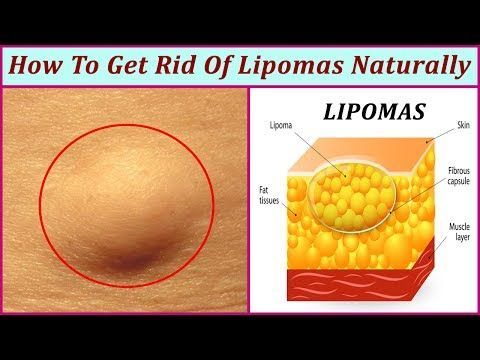
Which doctor treats the feeling of a lump in the throat?
The sensation of a lump in the throat is usually treated by a gastroenterologist, endocrinologist, otolaryngologist, or neurologist. In some cases, consultations with other specialists may be required.
What medicines help get rid of a lump in the throat?
The treatment for the sensation of a lump in the throat is prescribed depending on the cause of its occurrence. Gastroesophageal reflux drugs, antiallergic drugs, thyroid drugs, antidepressants, etc. may be prescribed. No drugs to treat the feeling of a lump in the throat should not be taken without the advice of a doctor.
Can the sensation of a lump in the throat be a sign of a dangerous disease?
Yes, maybe. The feeling of a lump in the throat can be a sign of various diseases related to various fields of medicine. If you feel a lump in your throat, you should consult a doctor to conduct an examination and identify the main cause of its appearance.

 1 Causes occurrence of a lump in the throat
1 Causes occurrence of a lump in the throat 10.1 Composition and active ingredients
10.1 Composition and active ingredients

